We're on Track to Hit a New Annual Record of Greenhouse Gas Emissions.
And looking back at Week 9 of 2024 (February 26 - March 3):
Although it was still early in the year, scientists already knew that this year could be record-breaking hot and concluded in week 9 of this year that there would be a 99 percent chance that 2024 would rank in the top five warmest years in NOAA's 175-year record. By the end of February, temperatures were above average over much of the globe. Another telling sign about worrying climate changes was the below-average extent of North American snow cover and Antarctic sea ice, ranked third and second lowest on record.
February was also when the earth saw four consecutive days with global surface temperature 2.0°C above the pre-industrial baseline. Professor Eliot Jacobson's graph should have been on the front pages of the world's newspapers, but the world's leaders and media didn't feel alarmed enough by this graph to raise the alarm.
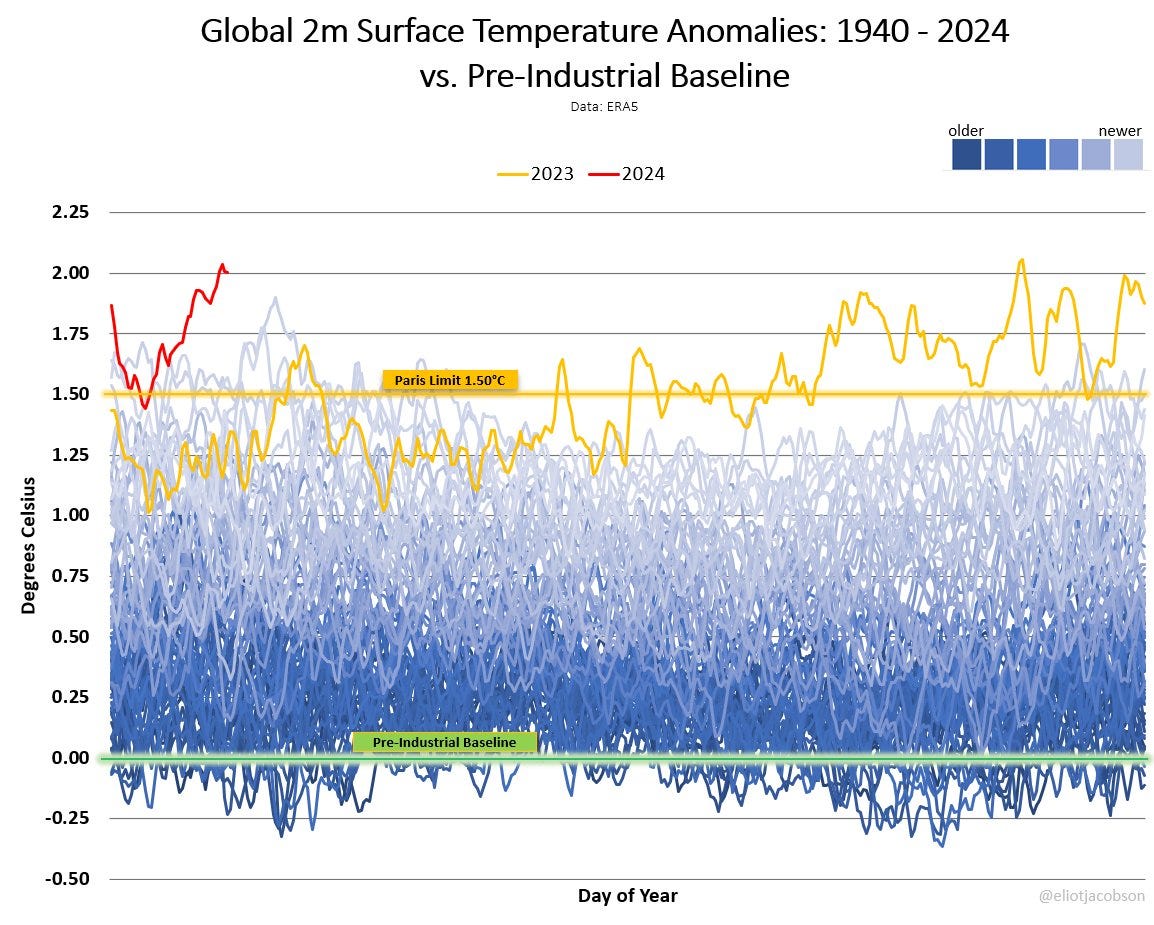
Instead, all attention in the European press went to protesting farmers in European cities. In week 9, just as in week 6 and later this spring, protesting farmers in Brussels and elsewhere set fire to tires, dumped manure on the street, shot flares at police, and rammed their trucks into roadblocks. Part of the long list of the farmers' complaints was about the "excessive environmental burdens."
I would have loved to see more articles in week 9 about the impact on nature caused by excessive environmental destruction, but burning tires get more attention than the absence of insects. It's hard to create clickbait about animals you can no longer see while orange flames and anger sell so well.
Instead of seeing the anger about environmental regulations, I would have preferred more attention in the media and politics for the devastating report by the United Nations Convention on Migratory Species of Wild Animals (CMS). It concluded that about 22% of the CMS-listed migratory species are threatened with extinction, and 44% show population declines. As much as 97% of all CMS-listed fish are threatened with extinction.
I'll repeat that last line since you may miss how serious this is: 97% of all migrating fish on the CMS list are threatened with extinction.
We are looking back at week 9 of this year. You should always complete chapters of a book before you read the last page, but let me take you forward some nine months to where we are today. We know now that these alarming conclusions didn't change a thing.
Passing 1.5 Celsius for the first year
We're on track to hit a new annual record of greenhouse gas emissions. This year will go into history as the first year we managed to heat our planet so much that we passed the 1.5 Celsius mark. I fail the words to describe how terrifying the situation is, and I wonder if words like extreme heat, drought, famine, floods, and conflicts make any difference. We know it's terrible, it will get worse, and worst of all, we have the knowledge, money, and means to avoid the worst of this existential crisis if we only would have the political will to do so.
Instead, the people of the most polluting country in history democratically crowned a new king who denies climate change as fiercely as he dislikes the will or interests of the people who put him on his throne.
Unfortunately, we don't have the luxury of time. The planet won't wait, and tipping points tip once; they don't flip back when reason finally sets in.
Today is the ninth day in a row that I've written about a week in this year. Every day, I note the stark contrast between the worrying situation in the world and the good life I live. Zooming out gives ugly scenes of environmental destruction, failed policies, increasing international tensions, and outright war. But as a photographer, I chose to zoom in to see the beauty of our planet reappear in the flowers that continue to pop up, in the kindness of the people I meet, and the support and cooperation between them.
I still haven't developed a string theory to connect those two worlds; they both exist, but if any of these worlds -the big bad one or the small beautiful one- were genuine and absolute, it would exclude the possibility of the other's existence. If we are all kind to our neighbors, there can't be war.
Escaping to the outdoors
These feelings may explain why I love long-distance walking. Under the endless space of the big blue sky, walking in open landscapes, on the beach, or overviewing the Grand Canyon, I defy the big is bad conviction. It makes me experience beauty at scale.
When I am in nature, politics, hatred, and inequality cease to be part of my experiences. Many feel this when walking the Camino de Santiago, where hope, freedom, equality, and optimism exist. I experience this to a certain extent when I walk in the dunes of this island or vast open spaces in the east of the Netherlands.
Photos of week 9
I will share photos of the beauty I saw and experienced in week 9, in late February and early March of this eventful year.
The mornings in my village were often like this: misty and slightly mysterious.
Perfect reflection in the dunes.
I visited Ghent in Belgium.
Jan van Eyck’s Adoration of the Mystic Lamb is one of the finest artworks of all time.
And here she is, Luna.
Notes:
https://www.theguardian.com/environment/2024/nov/18/climate-crisis-world-temperature-target
https://www.theguardian.com/world/2024/feb/26/seville-to-charge-tourists-to-visit-plaza-de-espana-to-limit-numbers
https://www.ncei.noaa.gov/news/global-climate-202402
https://earth.org/week-in-review-top-climate-news-for-february-19/
https://www.theguardian.com/environment/2024/nov/13/no-sign-of-promised-fossil-fuel-transition-as-emissions-hit-new-high





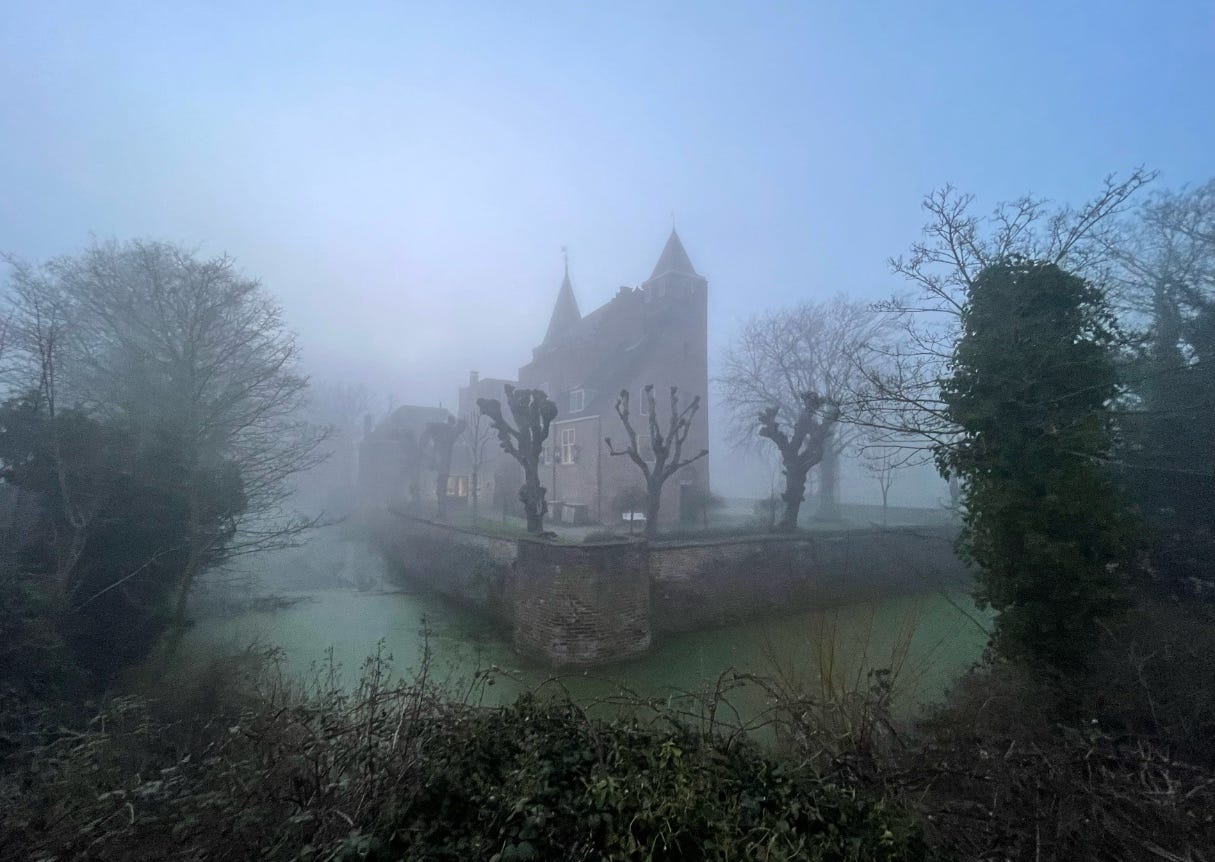
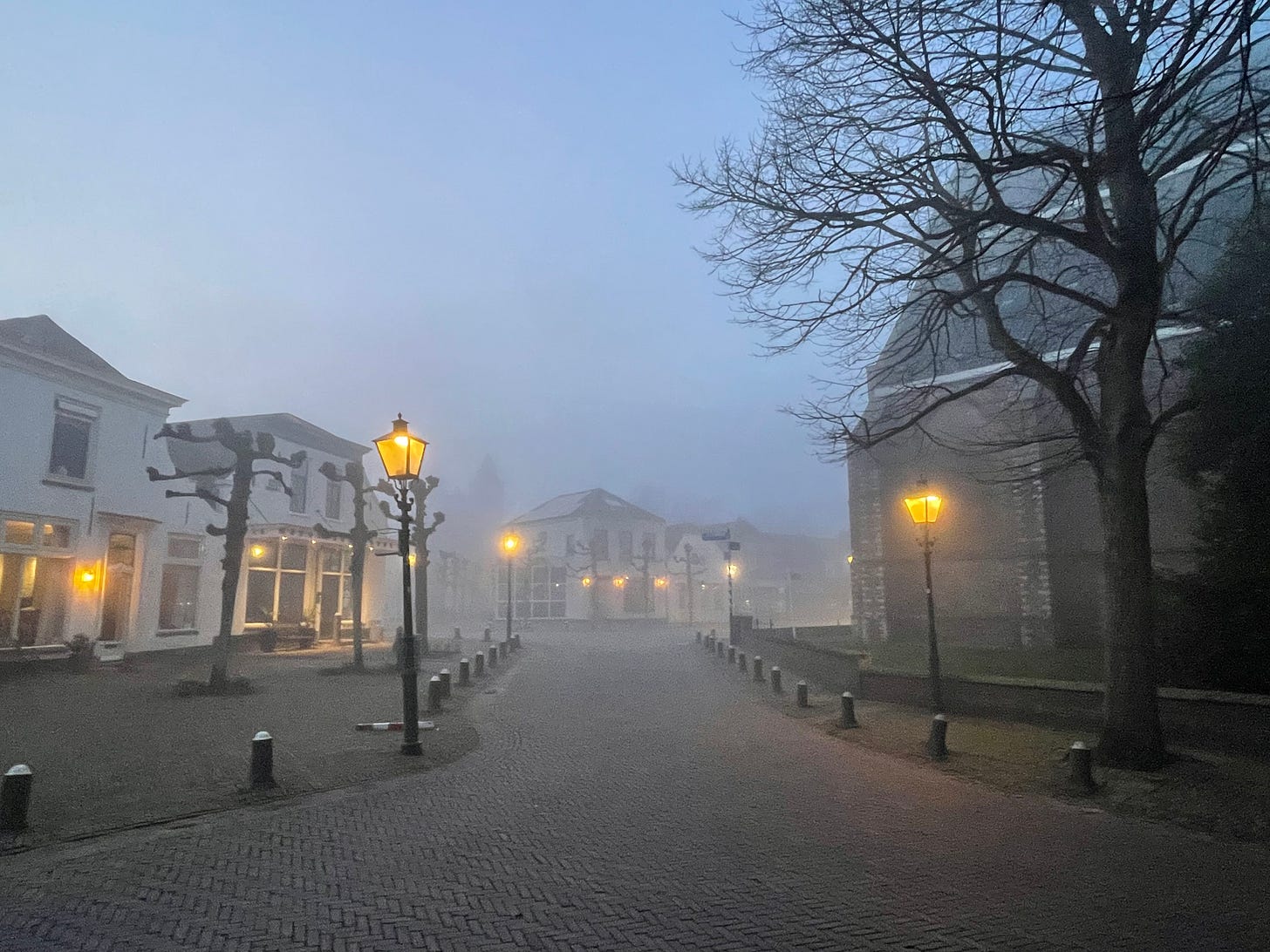

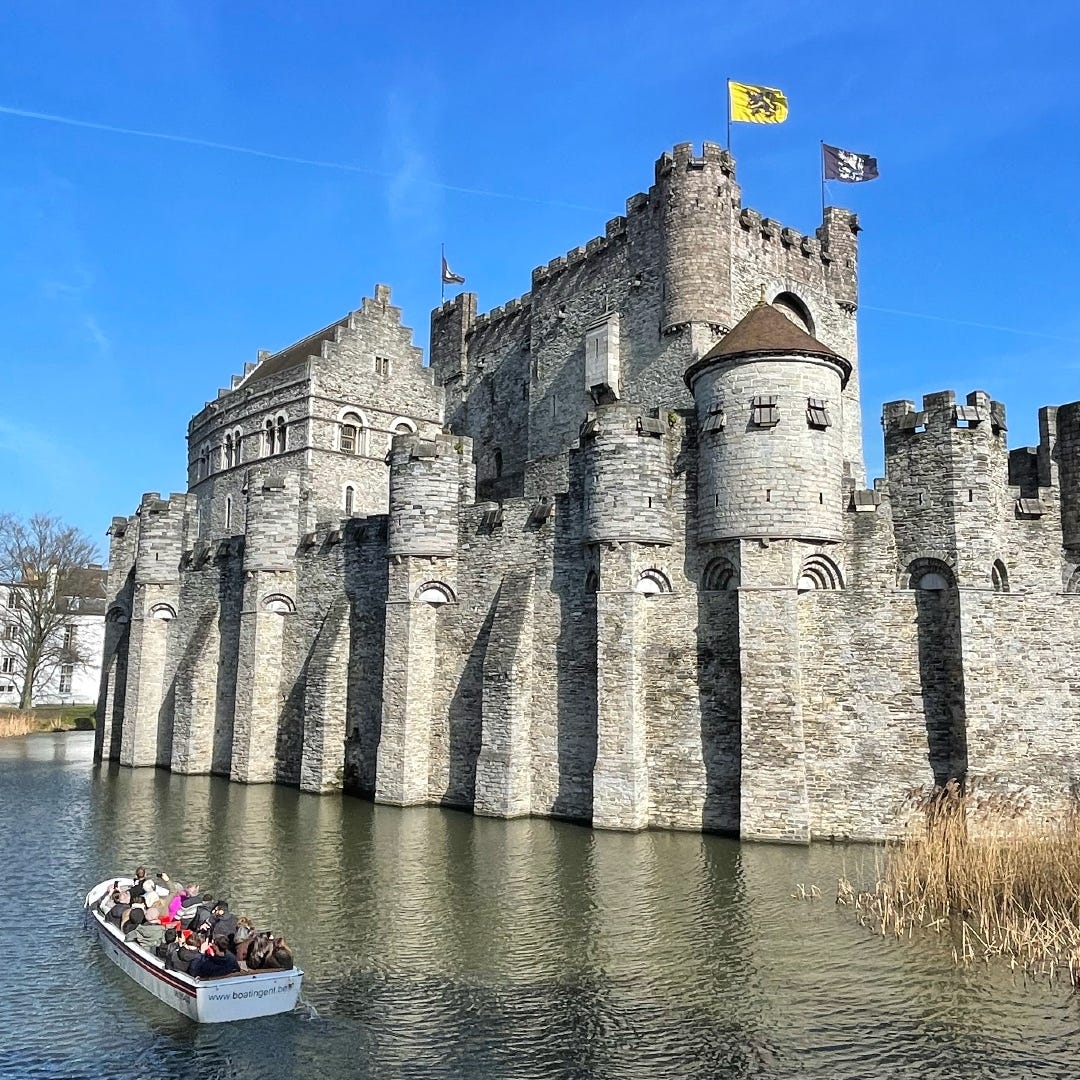

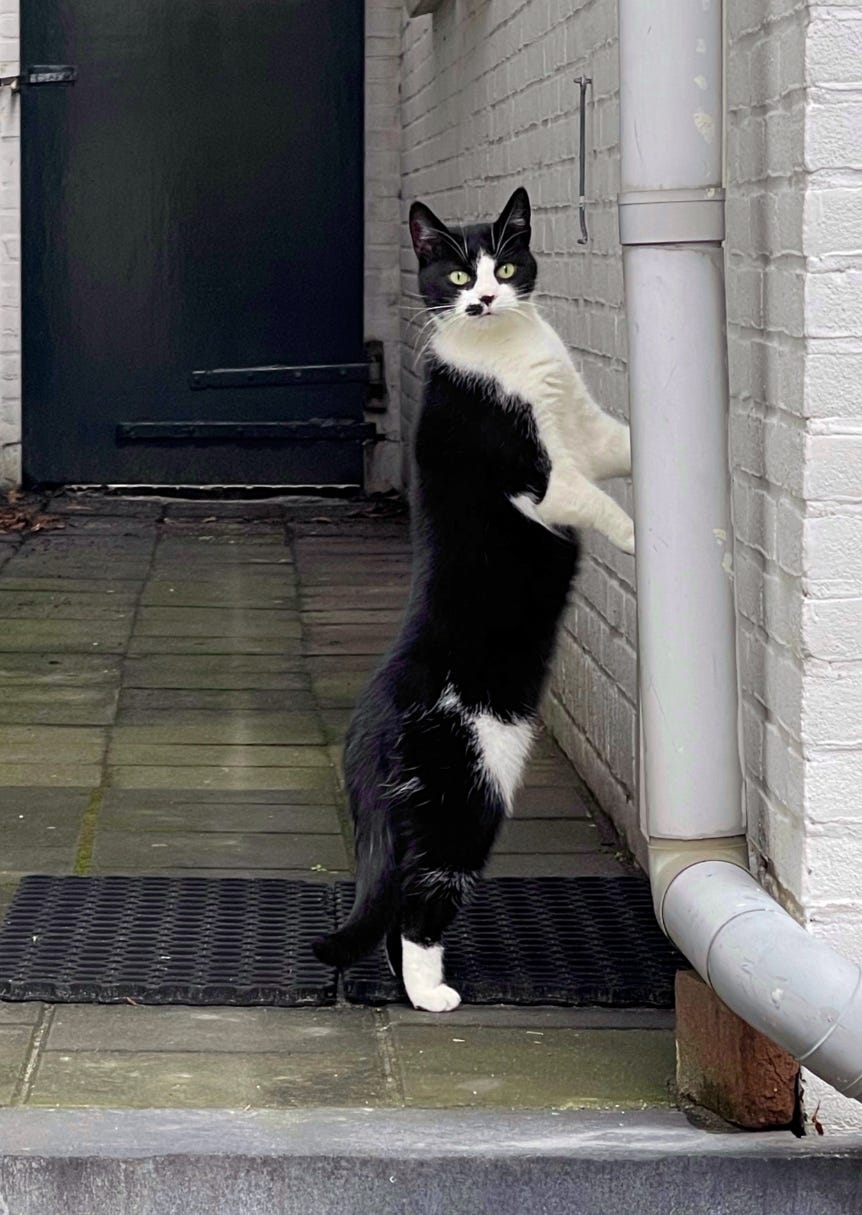


"It's hard to create clickbait about animals you can no longer see while orange flames and anger sell so well."
When I explain the absence of insects, many people seem pleased. I have been fighting denial trolls the last few days. So now I move on to your beautiful photos. I remember the fog. Mystic. 🌻
Since you add many new photos and all the recaps of events, the whole article is new and a good reminder.